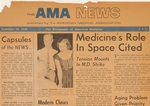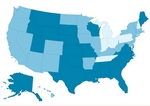profession
Uninsured not driving increase in ED visits
■ The elderly and those on Medicaid are among the most likely to use emergency departments.
By Christine S. Moyer — Posted June 9, 2010
- WITH THIS STORY:
- » Related content
A new report finds that the uninsured are no more likely to go to an emergency department for care than are those with insurance.
About one in five people went to an ED at least once in 2007, according to a report issued in May by the Centers for Disease Control and Prevention's National Center for Health Statistics. Most of the patients had some type of health insurance and considered themselves to be in poor health (link).
"The reason we did this particular short little report was to lay out exactly who does go to the emergency department. ...There seems to be a lot of misperceptions," said Amy Bernstein, ScD, an author of the report and chief of the Analytic Studies Branch in the Office of Analysis and Epidemiology at the NCHS.
In 2007, there were 116.8 million ED visits nationwide, up 23% from 1997.
Angela Gardner, MD, president of the American College of Emergency Physicians, said visits likely jumped during the recession, which began at the end of 2007, when waves of people lost their jobs and health insurance.
"We've heard from doctors that [ED volume] is going up everywhere," said Dr. Gardner, associate professor of emergency medicine at the University of Texas Southwestern Medical Center.
For the CDC report, researchers examined 2007 data from the National Health Interview Survey and the National Hospital Ambulatory Medical Care Survey. They found that as family income increased, the likelihood of ED visits in the previous year decreased. Adults age 75 and older, blacks, and people with Medicaid coverage sought emergency care most frequently.
Uninsured children and adults age 45 to 64 were no more likely than those with private insurance to have visited the ED at least once during the year.
Researchers found that having a usual source of medical care did not affect the number of times people younger than 65 went to the ED in a 12-month period. But ED visits were more likely among adults 65 and older who had a usual source of care.
"Often, primary care providers send patients to the emergency department because they know we'll take care of a problem expeditiously," Dr. Gardner said.
Similar findings on ED use were reported in a March Annals of Emergency Medicine study. Researchers found that people who visited EDs at least four times a year generally are white, insured and have a primary care physician (link).
The ACEP has called on the CDC to release a more comprehensive report so health professionals have greater insight into the condition of the nation's EDs as health care system reforms are implemented.












